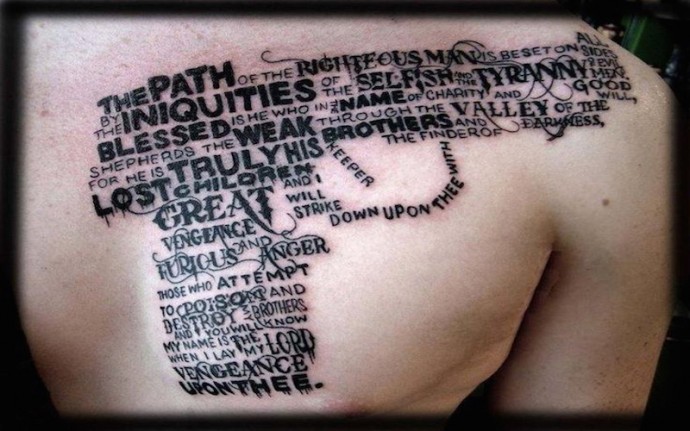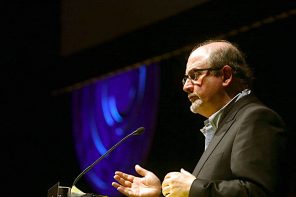Just as I finished Karen Armstrong’s Fields of Blood, which is a very extended attack on the notion that “religion is inherently violent” or that religion and war go together like a horse and carriage, news broke of the latest atrocity-of-the-day: the beheading of 21 Egyptian men by ISIS, apparently in Tripoli. The men were Coptic Christians, from an Egyptian village where Christians and Muslims have lived together peaceably, but where lack of employment opportunities compel men to look for work abroad. According to NPR, one of the brothers of the victims of the gruesome executions invoked a biblical use of the “m” word – “martyr” – to understand the act:
“I prayed for his soul,” he says. “I heard him calling, ‘Oh Jesus,’ as he was beheaded. I’m happy and I’m proud of him. He is a martyr for Christ.”
In response, the Egyptian government initiated a bombing campaign on presumed ISIS targets in Libya, but early reports indicate that among the dead in those attacks are civilians unconnected with the group. And so the cycle of retribution, in the name of “religion,” continues.
Such a context makes Karen Armstrong’s job in this book difficult. In the work, she assesses countless such examples, including everything from violence in ancient Sumeria, to the “psychotic” Crusades, to the Thirty Years War, to the Terror in France, to the American Civil War, and finally to the appalling legacy of violence and destruction that characterized so much of the twentieth century.
To these examples (or to the one that will spring immediately to our mind, the atrocity of 9/11), she would have us remember as well the American role in perpetuating cycles of violence and retribution, including the deaths by drone strikes of women such as Mamana Bibi, killed in October of 2012 while out picking vegetables in a field in north Waziristan. Armstrong concludes that, contrary to what Cain asked sarcastically of his brother Abel in the Old Testament – “Am I my brother’s guardian?” – we are now “all implicated in one another’s history and one another’s tragedies.”
Armstrong’s is an intervention – well-intentioned, extremely informative, but not entirely successful – in an increasingly tiresome “debate” of sorts between New Atheists (the Richard Dawkins and Sam Harris crowd, et al), and religion-defenders (with Armstrong at the forefront). To use yet another example, an attack on Pakistani schoolchildren by the Taliban, a conversation might go something like this:
New Atheists: The Taliban just slaughtered those children in Pakistan. Crusaders slaughtered a bunch of people in the medieval era. The list goes on. Are you really saying religion had nothing to do with this? Ha, fat chance. If all religions just died tomorrow, good riddance.
Defenders: So if all religions died tomorrow then violence and atrocities would just suddenly cease? You don’t know much about history.
NA: Look around the world. Pretty much all the nastiest mass murderers claim religious inspiration.
Defenders: That’s a simplistic way to look at an incredibly complex history that has everything to do with the coming of modernity and an abortive nationalism to much of the Middle East, and little to do with Islam or with a serious reading of the Qur’an. The problem with those who carried out the actions on 9/11 is precisely how little they knew of Islam, not how much.
NA: For every Mother Teresa (and we don’t think she’s all that great, for that matter), there have been a hundred Bin Ladens and Jim Jones’s, or wannabes.
Defenders: The human propensity to violence is deeply rooted in human societies – as I spend about two-hundred fifty pages of my book (which all of you keep saying that you haven’t read, and don’t want to) exploring. Moreover, “our modern Western conception of ‘religion’ is idiosyncratic and eccentric. No other cultural tradition has anything like it, and even premodern European Christians would have found it reductive and alien. In fact, it complicates any attempt to pronounce on religion’s propensity to violence.” Besides there is no universal way to define religion, and for most of human history has simply been a catch-all for “imprecise connotations of obligation and taboo.”
NA: Whatever. We can blame religion more than anything else for most wars in history and much of what is wrong – anti-scientific thinking, climate change denial, suicide bombings, Tea Party wing-nuttery, and the list goes on and on – in contemporary societies.
Defenders: We can blame “religion” more than what? More than nationalism? More than struggles over land, property, and power? More than secular ideologies such as Nazism? Since the birth of the modern world, anyway, states have claimed a monopoly on violence, as Max Weber famously wrote, and they typically harness quasi-religious feelings of nationalism to bolster their essentially secular campaigns of violence to achieve political ends.
NA: You want to talk Nazism – that’s just another religion. Or have you never seen Triumph of the Will? That’s a 6 hour church service if I’ve ever seen one.
Defenders: By your reckoning, we should just blame “Science” for everything, rather than carefully consider the contradictory human impulses that go into the creation of “religion,” “science,” “government,” and other human institutions. More importantly, one of the most important responses of “religion” to human violence, historically, has been to hold human societies to higher standards, to protest injustice and bloodshed, and to point to methods of reconciliation and justice.
As I say in my book, “perhaps the role of religious vision is to fill us with a divine discomfort that will not allow us wholly to accept the unacceptable.” Or look at another example, the violent subjugation of Native Americans during the age of colonization: “Where churchmen frequently condemned the violent subjugation of the New World, the Renaissance humanists who were trying to create an alternative to the cruelties committed by people of faith endorsed it.”
And the beat goes on.
I’ll stop there because one quickly grows weary of the sophomoric sarcasm and retorts of the haters, and wants to tell the defenders, “don’t go here; this is like one of those bad Facebook threads that gets hijacked by some ideologue and pretty soon everyone comes out looking poorly.”
But Armstrong is one of those patient writers who truly believes that a careful and reasoned exploration of a topic as politically and ideologically charged as the relationship between religion and violence will lead to greater understanding, and heighten our sensitivities as to how we may come to terms with our own era of violence and destruction. If you get nothing else out of this book, you will get that some kind of organized violence is a constant of human history, even if its state sponsorship is a relatively more recent phenomenon.
Sympathetic though I am to Armstrong’s project, and admiring though I am of the tremendous erudition on display in her survey of five thousand or more years of human history, there is a flaw in the argument that makes the book less than fully satisfying (even if I would consider assigning it for a “World History” survey course in college). On the one hand, as she rightly points out in the introduction, “religion” as we understand it usually comes loaded with a heavily Protestant connotation of assent to a particular set of beliefs which are held internally. But that is a form of “religion” uncommon in human history. And anyway, there is no such thing as “religion” per se, but only the varied, humanly constructed, and historically context-specific forms that come under that name.
With predictable regularity, defenders of the notion that “X religion is a religion of peace” arise to explain and defend particular religious traditions against what they perceive as appalling misues of it. For example, Mustafa Akyol’s op-ed in yesterday’s Times calls for a “Lockean leap” in Islam. Here again, religion is set apart as a thing that can change with the introduction (or, in this case, revitalization) of a theological concept that has been buried by other, worse, theological ideas. The message is: The religion itself is good; it’s just that people always muck it up.
Critiquing these abstractions of true religion apart from context is standard-issue stuff for religious studies classrooms. The issue here is that, in addition to saying that, Armstrong also is at pains to defend religion against the haters, as in the imagined dialogue above. To do so, she sometimes has to give up the very deconstruction of the term that she artfully manages to accomplish in the introduction. Thus, in her efforts to portray the complexity of particular events or movements (such as the rise of radical Islam, or the role of religion in the Thirty Years War), she separates out “religion” from other factors – political, cultural, economic, and so forth – after she has pointed out that such a separation is a construct of modernity.
This is not a fatal flaw in the book, but speaks to its contested place as at once an academic survey as well as an intervention in an ongoing but oversimplified and disheartening “debate.” Armstrong wants to examine, in all its complexity, the relationship of religion and violence, and often does so with great success and insight. She also wants to exonerate “religion,” but that tends to muddy the waters of the first, and more important, goal of this book.





